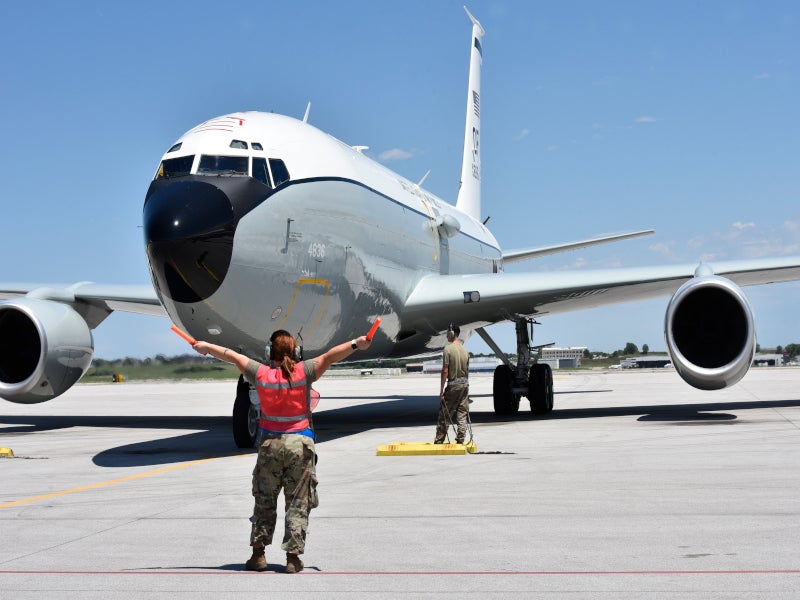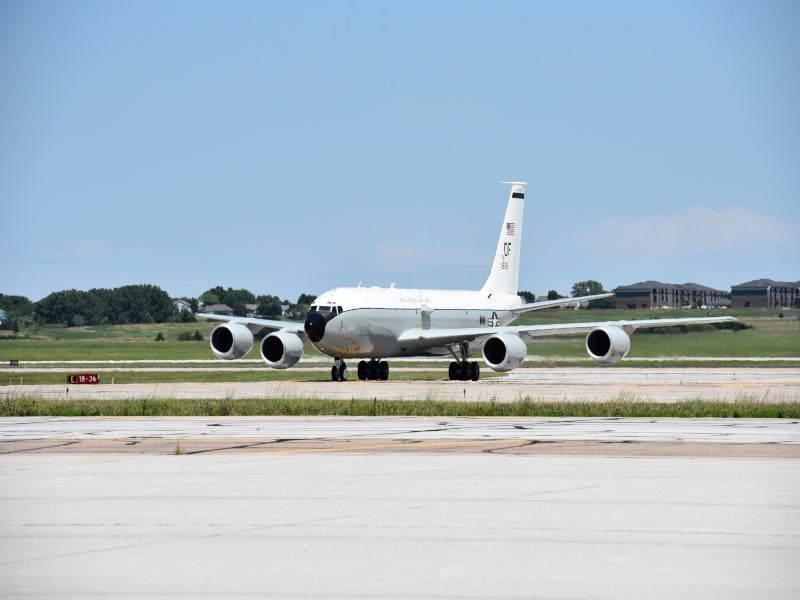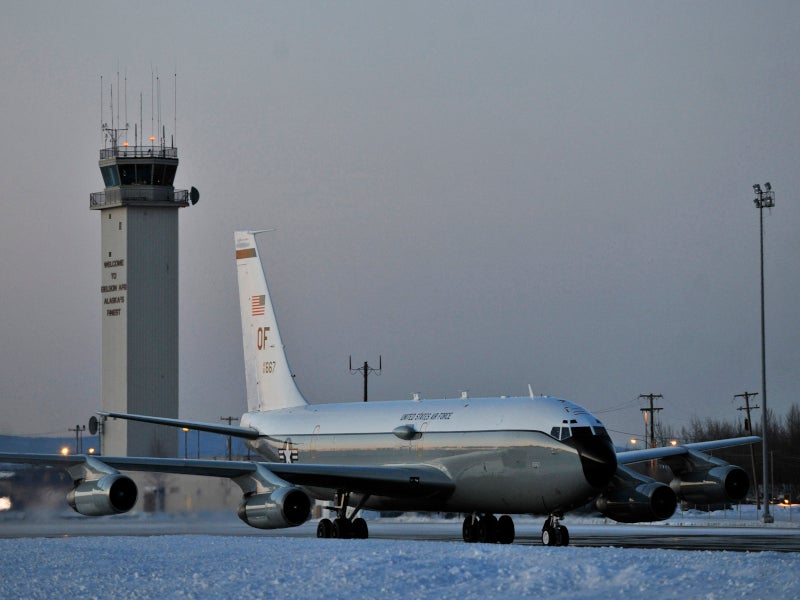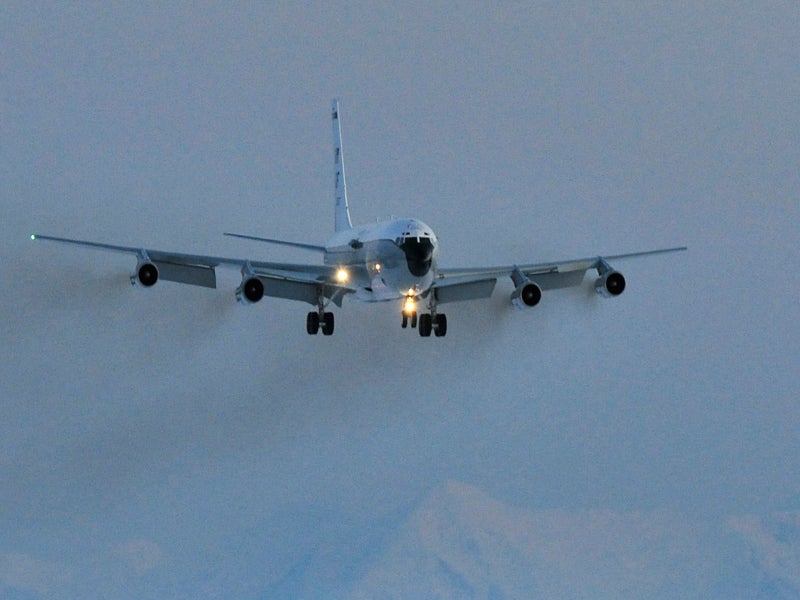WC-135 Constant Phoenix is an atmospheric collection aircraft developed by Boeing for the US Air Force (USAF) to conduct air-sampling operations, supporting the Limited Nuclear Test Ban Treaty of 1963, which prohibits any country from testing nuclear weapons in the atmosphere, outer space, and under water.
The WC-135 Constant Phoenix was initially used to conduct air sampling missions over the Far East, Mediterranean Sea, Indian Ocean, Bay of Bengal, the Polar regions, and offshore South America and Africa.
The aircraft is flown by the members of the 45th Reconnaissance Squadron at Offutt Air Force Base (AFB), Nebraska, while Detachment 1, Air Force Technical Applications Center at Offutt AFB provides special equipment operators to collect particulates and gaseous effluents and debris across the globe using external flow devices.
Design
The WC-135 Constant Phoenix aircraft has a length of 139ft 11in (42.5m), a height of 42ft (12.8m), and a wingspan of 130ft 10in (39.8m). The weight of the aircraft is 120,170lb (54,508kg).
The aircraft can fly with a maximum take-off weight of 300,500lb (136,304kg), including a fuel capacity of 130,000lb (58,967kg). The number of crew members accommodated in the aircraft varies with the mission.
WC-135 Constant Phoenix development details
The Constant Phoenix programme was commissioned by General Dwight D Eisenhower, the 34th US President, in September 1947, when he directed the US Army Air Force, a predecessor of the US Air Force, to develop capabilities to identify atomic explosions across the world.
The WC-135 Constant Phoenix aircraft was developed by modifying C-135B or EC-135C platform. The modifications in the aircraft are associated with the installation of an atmospheric collection suite, which allows for the detection of radioactive clouds in real-time.
The WC-135 aircraft achieved initial operating capability in December 1965 and became the workhorse of the atmospheric collection programme. It replaced the previous WB-50 atmospheric collection aircraft.
The USAF had a fleet of two WC-135 Constant Phoenix (WC-135C/W) aircraft in its inventory, operated and maintained by the 45th Reconnaissance Squadron. The WC-135C aircraft with tail number 582 was officially decommissioned in November 2020, after completing more than 29,689 flying hours.
The USAF is acquiring a fleet of three new WC-135R, which are converted KC-135R Stratotanker aircraft.
The retirement ceremony for the last of the old WC-135C/W fleet, with tail number 2667, was held in September 2022, coinciding with the first WC-135R’s official entry into service.
The first WC-135R with tail number 64-14836 was delivered to the USAF’s 55th Wing, the host unit at Offutt AFB, in July 2022.
Key features of WC-135 Constant Phoenix
The aircraft features external flow-through devices that allow for collection of airborne particulates on filter paper for performing analysis in the event of a nuclear detonation. The atmospheric sampling and collection suite includes advanced atmospheric research equipment (AARE), including a whole air collection system (WACS), directional gamma sensor system (DGSS), radiation monitoring and analysis system (RMAS), U1-B particulate sampler assembly, and supervisory control and data acquisition (SCADA).
The aircraft is fitted with a pod-based, platform-agnostic, particulate collector called Harvester, which is capable of full radiation detection using a sensor, and a platform-agnostic gaseous collector.
The Liquid Oxygen (LOX) measurement system enables the aircraft to carry liquid oxygen for the crew to breathe in case of an emergency. It consists of field-calibratable signal conditioner unit and quantity indicator display, which are operated using software.
The system allows the conversion of liquid oxygen stored in the aircraft into breathable gas to be inhaled through masks in case of an emergency. It protects crew members from becoming unconscious in case of cabin pressurisation failure, smoke, fumes, or other air contamination.
Advanced atmospheric research equipment details
The WACS captures and stores radioactive air samples from the bleed-air system of the WC-135 aircraft. It pressurises air to approximately 3,000psi and removes heat and moisture before filling 900in³ steel vessels.
Each aircraft has two U1-B sampler assemblies, each having 12 cotton filters to capture dust and debris. The U1-B assembly houses the RMAS assembly, which is used to detect the aircraft’s contact with radiation. It measures gamma emissions to determine radioactivity on particulate filters. The findings are sent to the software interface of the special equipment operators.
DGSS offers directional indications of gamma radiation relative to the aircraft and allows special equipment operators to vector the aircraft towards radioactive debris. SCADA serves as a command interface for all mission equipment and indicates the internal and external radiation levels in real time.
Crew safety equipment details
The aircraft is equipped with a three-stage high-efficiency particle arresting (HEPA) filter to scrub all cabin air to minimise the spread of contaminants.
The electronic personal dosimeter (ESD) placed throughout the cabin offers real-time feedback, while a thermo-luminescent dosimeter (TLD) is provided to every crew member to track exposure levels quarterly. Other onboard crew safety equipment include handheld alpha, beta and gamma detectors.
Engine and performance details
The WC-135C Constant Phoenix was equipped with four Pratt & Whitney TF33-P9 turbofans without thrust reversers, while the WC-135W was powered by four Pratt & Whitney TF33-P-5 turbofans with thrust reversers, each having 16,050lb thrust.
The maximum range of the WC-135 aircraft was 4,000nm, while the maximum speed was up to 350kt (403mph). The aircraft was capable of operating at altitudes up to 40,000ft (12,192m).
WC-135R modifications
The new WC-135R aircraft features a new cockpit and is powered by four CFM-56 high bypass turbofan engines manufactured by CFM International, a joint venture between GE Aviation and Safran Aircraft Engines.
The modifications are aimed at addressing concerns related to airframe viability of the ageing WC-135W fleet.
Contractors involved
The USAF contracted L3Harris, a technology company based in the US, to convert three KC-135Rs into the new WC-135R aircraft. L3Harris and the 645th Aeronautical Systems Group are conducting the modifications in Greenville, Texas.
L3Harris’ Reconnaissance Mission Systems (RMS) division subcontracted Liquid Measurement Systems for the development of the LOX measurement system for the WC-135R Constant Phoenix in August 2019.
Operations conducted by WC-135 Constant Phoenix
The WC-135 was instrumental in tracking radioactive debris from the Chernobyl nuclear plant disaster in the former Soviet Union in 1986.
The aircraft also collected air samples in international airspace over the Pacific, supporting Operation Tomodachi, which was a US Armed Forces assistance operation for disaster relief in Japan in response to the Tohoku earthquake and tsunami in 2011.











